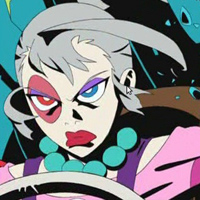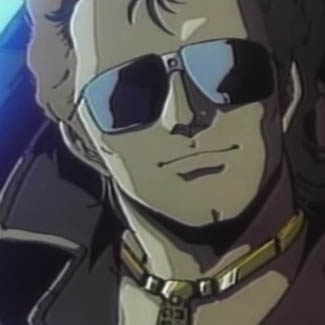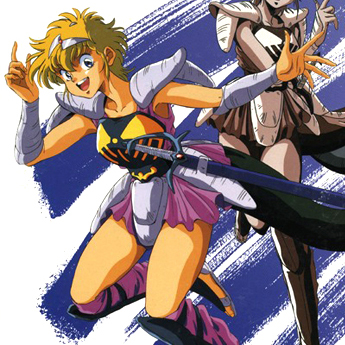
In this age of Internet streaming, it’s easy to forget that only a few scant years ago, the most efficient way to experience anime was to collect it on home video in such formats as VHS, laserdisc, and DVD. This required disposable income, dedication, and more than a little shelf space. Eventually, though, any otaku’s collection begins to resemble Smaug’s dragon-horde, and as various anime series wage war for shelf space like the five armies at the end of The Hobbit, I have to sit back and observe the chaos like Bilbo wearing the One Ring and ponder: “Why the hell did I purchase this disc in the first place?”
Welcome to The Vault of Error, in which I plumb the dusty depths of my DVD collection for hidden treasure and ask myself whether or not some of these titles should have been resigned to the trade-in bin at MovieStop years ago.
The first title on the chopping block is Harmagedon, AKA Genma Taisen, AKA The Great War with Genma, an inscrutable little gem from 1983. I own the 20th Anniversary Edition DVD released in 2003 by the now extinct Central Park Media through their U.S. Manga Corps label.
This video has sat on my shelves, unwatched, for over eight years…
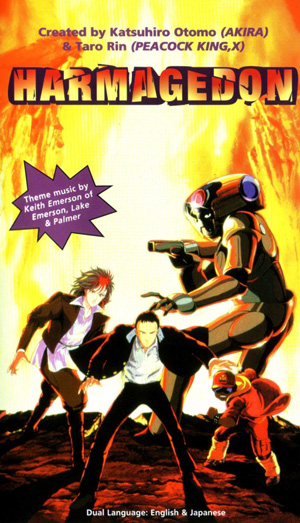
In Harmagedon, Princess Luna of Transylvania (I’m not making this up) teams up with an alien cyborg named Vega and a culturally diverse crew of psionic warriors to beat back the threat of Genma, an intergalactic entity bent on the annihilation of the entire universe. Our intrepid team of psychics include a Native American, a yogi, a swami, a child martial artist, a sassy black kid on roller-skates, and an ordinary Japanese high student named Jo.
The film encompasses their efforts to save the Earth from utter destruction, guided by a benevolent trans-dimensional being known as Floy. Jo is ostensibly the main character, and aside from dealing with natural disasters and demonic incursions, he also has to handle the pressures of not making the baseball team, his best friend ditching him, his girlfriend dumping him, and his subconscious desire to bone his older sister. All manner of strange psychic shenanigans ensue.
Harmagedon has an incredible pedigree. Rintaro (Space Pirate Captain Harlock, Galaxy Express 999) directed it. Katsuhiro Otomo (Akira, Domu) did the character designs. Keith Emerson, of Emerson, Lake & Palmer, did the musical score. The film was Kadokawa’s first venture into feature length animation. And it was based off of a long-running series of manga and novels by Kazumasa Hirai (8 Man, Wolf Guy) and Shotaro Ishinomori (Cyborg 009, Skull Man), two giants in the history of Japanese comics that stand beside the likes of Osamu Tezuka. Truly, Harmagedon was a watershed moment in anime history and a precursor of things to come, and it remains a cultural artifact from a time period in the medium the likes of which we are unlikely to see again.
So was it worth the six bucks I paid for it? Does it belong on my shelf, in between Haibanei-Renmei and The Humanoid?
The short answer: yes. The long answer: it’s complicated.
Rintaro strikes me as an art house auteur that somehow keeps managing to finagle mainstream production budgets. His works are lyrical, poetic, and often surreal, and they tend to elicit passionate reactions both positive and negative. Here’s the kicker: whether you love Rintaro’s work or hate it can vary not just from project to project, but from viewing to viewing. I enjoy The Dagger of Kamui, for example, but I didn’t care for his take on X: 1999, and the first time I saw his love letter to Tezuka’s Metropolis, I didn’t like it at all, an opinion that has changed dramatically with repeated viewings. As such, perhaps the most positive thing I can say about Harmagedon is that it’s a work unlike any other. It contains some of the most gorgeous “flying clutter” animation I’ve seen as well as beautiful, hand-painted, backgrounds that are often of a psychedelic nature. The depictions of telekinetic warfare and volcanic eruptions are a testament to the love that the animators poured into their craft.
The most negative thing I can say is that the plot is invariably inscrutable, sometimes goofy, and often downright weird. It’s not often you encounter a film that includes such sincere proclamations 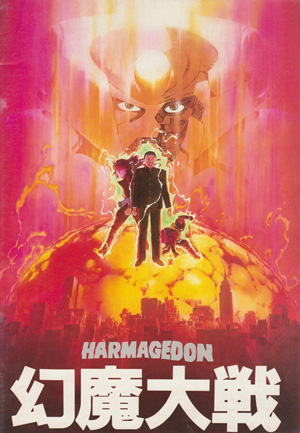 as: “How can I save this baby fawn if I can’t even save myself?” And although the movie clips along at a brisk pace, Harmagedon is over two hours long, and that’s more Rintaro than the average viewer can handle in one sitting.
as: “How can I save this baby fawn if I can’t even save myself?” And although the movie clips along at a brisk pace, Harmagedon is over two hours long, and that’s more Rintaro than the average viewer can handle in one sitting.
A friend of mine who shall remain nameless to avoid incurring the wrath of Patrick Macias once described Harmagedon as a film that every anime fan should watch exactly once. I would have to agree, although I’m not willing to part with my copy now that I’ve seen it. Not only within it do I see the seeds that eventually sprouted into Akira, but I can also threaten my friends and family with it if they misbehave.
“Sorry, sis. You ate the last pudding cup. Now it’s time to watch Harmagedon.”
“NNNNNOOOOOOOO!”
<BOOM>
Distributor: U.S. Manga Corps
Originally Released: 1983
Running Time: 131 minutes



